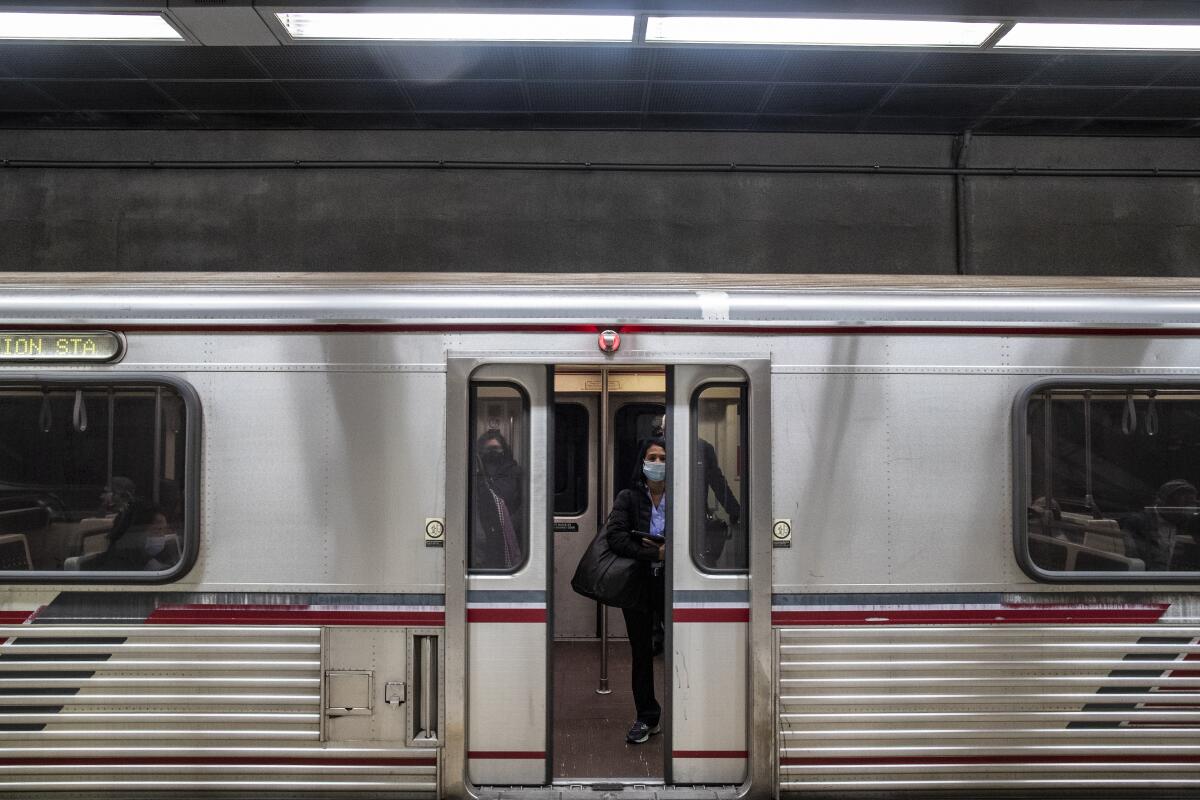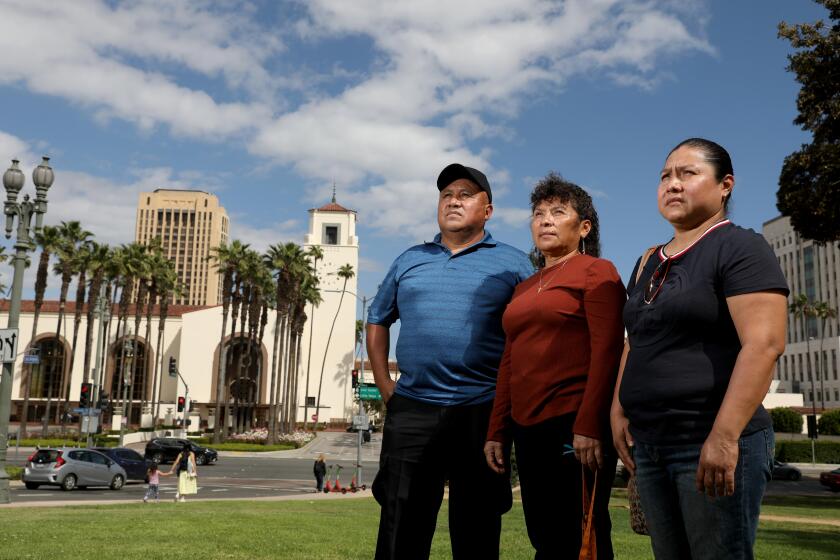Rise of drug overdose deaths and crime pushes Metro to weigh more security

- Share via
With an upswing in drug use, rising crime and a growing number of drug overdose deaths on Metro trains and buses, transit officials are looking to increase security on the system.
Twenty-one people have died on trains and buses in the Metro system so far this year. There was one homicide, but most died from apparent overdoses. That’s as many who died in all of 2022 and marks a significant departure from the previous years.
Gina Osborn, the top safety officer of the Los Angeles County Metropolitan Transportation Authority, presented data to the Metro executive board on Thursday showing an alarming rise in crime and plans next month to ask for an increase in Metro transit safety officers riding the system.
Complaints about drug use and sales reported on the Metro Transit Watch app skyrocketed nearly 100% last year, compared with the previous year, she said. During the same time, reports of serious crimes shot up 24%. And operators were being assaulted at a rate of about 14 every month.
Among the deaths were a man stabbed at the Westlake/MacArthur Park station last month. At a downtown station, there was another stabbing on Valentine’s Day. Also last week, a female passenger was dragged from a Blue Line platform and assaulted before another passenger saved her.
“It’s stunning,” said Paul Krekorian, president of the Los Angeles City Council and a member of the MTA executive board. “This is an existential threat to the Metro system.”
Boardings on trains remain at 62% of pre-pandemic levels, while bus ridership sits at 71%.
“It’s an emergency situation,” board Chair Ara Najarian told The Times. He said that he supports more transit officers and brought the report before the board. “I have seen it with my own eyes.
“We saw drug deals going on at the ground level,” said Najarian, describing what he and two other board members observed at the MacArthur Park station weeks earlier.
Most of the deaths are along rail lines, and data show the Red Line has the highest incidence of crimes.
“There shouldn’t be drug selling, drug use, passed-out patrons on the trains, urine in the elevators and employees getting mugged,” he said.
Osborn has not publicly stated how she plans to deploy the officers or how many she is seeking. And she will probably face resistance.
As homeless people shelter in Union Station, janitors and retail workers face threats, erratic behavior and assaults. Their union wants protection.
The board — which oversees the agency and is made of elected officials including its newest member, Los Angeles Mayor Karen Bass — has been leery of beefing up enforcement amid criticism of racial profiling on the lines.
There are about 50 Metro transit officers — from a force of 198 — on any given day across the system that stretches the span of Los Angeles County and includes about 100 miles of subway and rail line. That’s in addition to officers from the Los Angeles and Long Beach police departments and Los Angeles County sheriff’s deputies who are contracted to patrol the Metro.
Osborn told the board that adding more transit officers and preventing fare evasion could improve conditions.
“I say the answer is access control,” she said. “Not all fare evaders are criminals, but all criminals are fare evaders.”
Transit officers employed by Metro are tasked with enforcing the code of conduct and preventing fare evasion, while police focus on drug use and other crimes.
Osborn pointed to January data from law enforcement that found most of those who were arrested could not show proof that they had paid to enter.
Board member and Supervisor Holly Mitchell said the correlation made her “a little nervous.”
“I want a safe system. And yet, I don’t want us to be so reactionary that we throw out past experiences,” she said. She said she wants to ensure that “people of color do not become targets.”
Others have questioned whether law enforcement has done its job. The current LAPD and Sheriff’s Department contracts expire in June, and some social justice activists have called for them to be eliminated for good.
“Many riders feel unsafe with police presence. There is race- and gender-based harassment by police. Spending hundreds of millions on Metro’s multi-agency police contracts have not worked to address safety issues,” said Laura Raymond, director at the Alliance for Community Transit-Los Angeles, an advocacy group. “We need a new approach.”
Metro officials acknowledge they need to retain and attract more riders as the agency is undergoing an aggressive rail build-out.
The agency has invested in a flurry of programs to make riders feel safer. It funds a shelter to try move unhoused people out of stations and off trains and buses, created a $122-million ambassador program that brings in uniformed personnel to assist riders, and is teaching operators how to “de-escalate” tense situations with passengers.
Last month the agency began an anti-drug campaign that includes announcements over the rail intercom to report drug use and the deployment of officers to arrest drug users and sellers.
The crime, filth and erratic behavior have caused female ridership to drop. According to a Metro survey last year, 49% of riders were women, compared with 53% in 2019. Metro users and workers complain that human waste and passed-out rail passengers are increasingly common.
“It’s time to put aside the skepticism about law enforcement and security detail and get our system back,” Najarian said.
More to Read
Sign up for Essential California
The most important California stories and recommendations in your inbox every morning.
You may occasionally receive promotional content from the Los Angeles Times.















